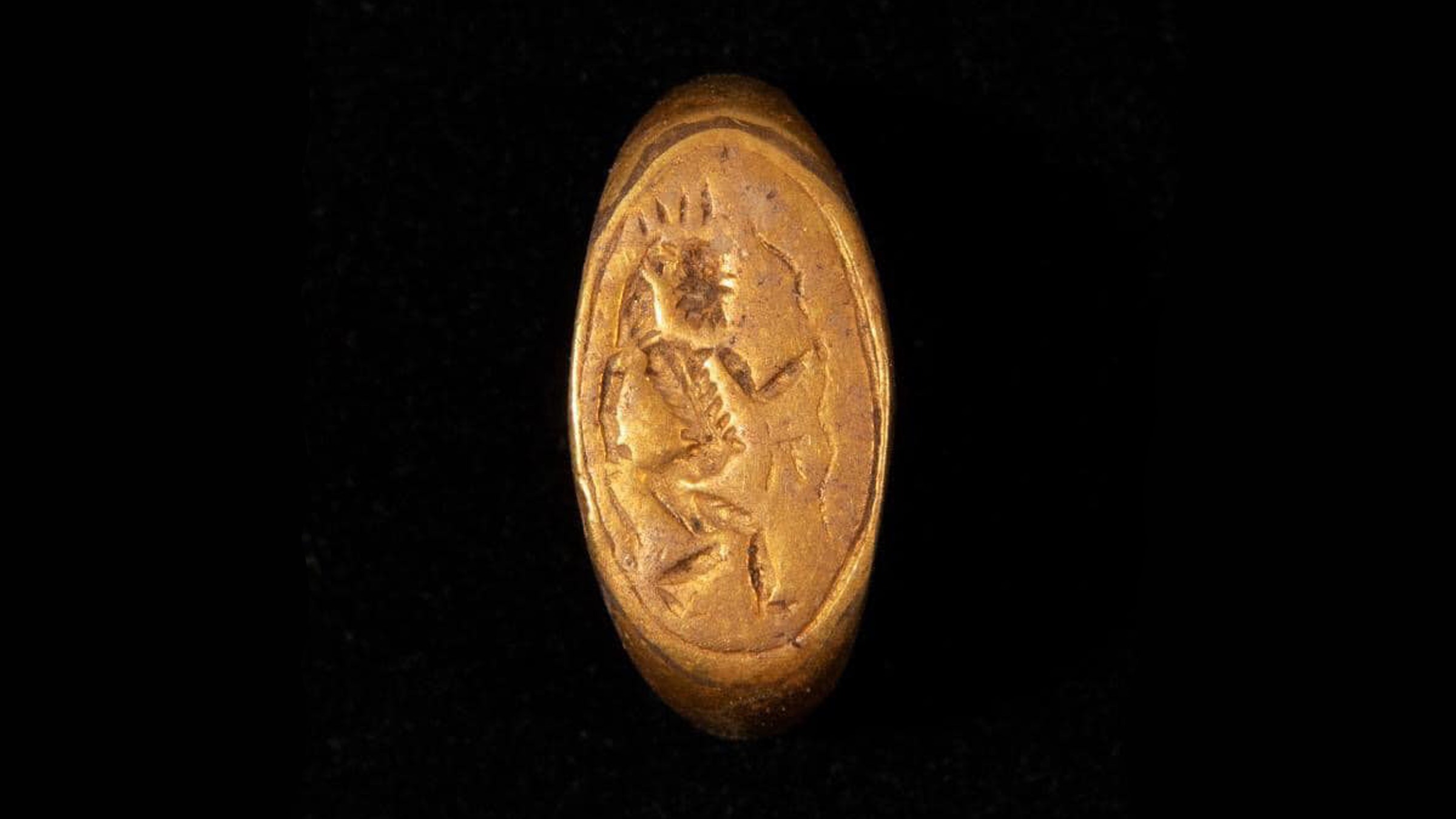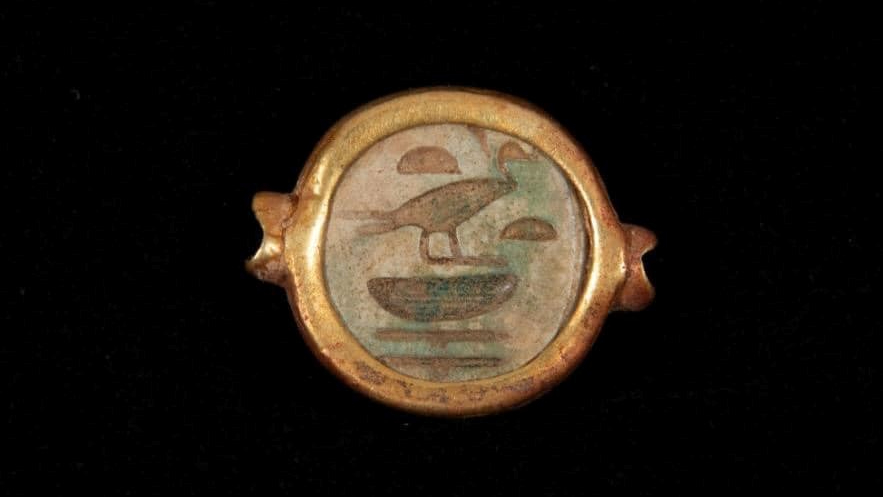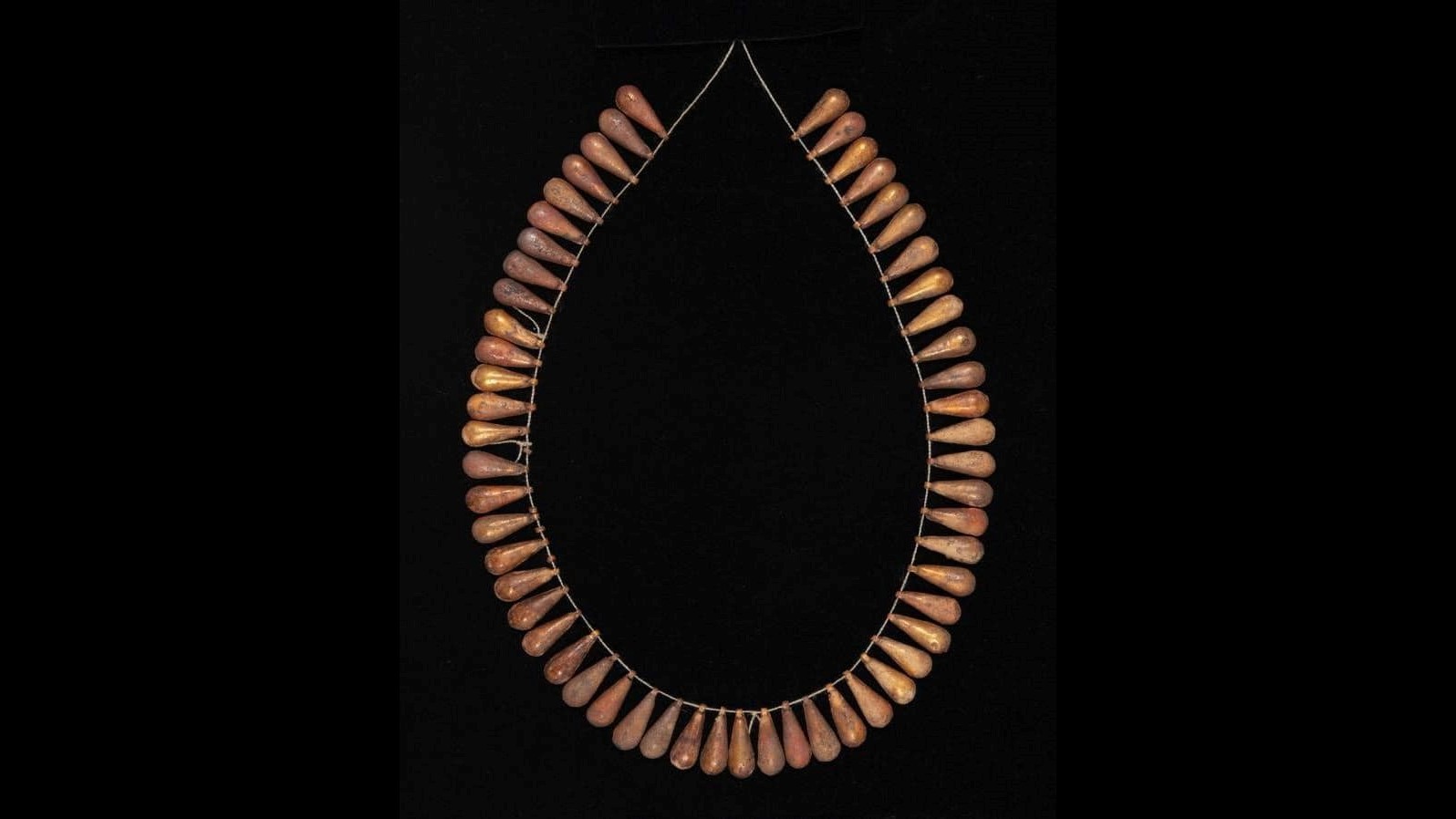Egyptian ring featuring 'god of fun' discovered in ancient burial
A mysterious burial from ancient Egypt contains gold jewelry, including three rings — one featuring the Bes, the god of fun — and a necklace.

Archaeologists in Egypt have unearthed stunning gold jewelry, including a ring depicting the "god of fun," in a burial that's more than 3,300 years old, the Egyptian Ministry of Tourism and Antiquities announced.
The burial is located in the northern part of the ancient city of Akhetaten (modern-day Amarna), about 186 miles (300 kilometers) south of Cairo. This city was built by the pharaoh Akhenaten (reign circa 1353 B.C. to 1336 B.C.), who tried to change Egypt's polytheistic religion by focusing it around the worship of the Aten, the sun disk. He moved Egypt's capital city from Thebes in modern-day Luxor to the newly built desert city of Akhetaten. Ultimately Akhenaten's religious reforms were undone by his son, Tutankhamun, and the new city was abandoned not long after Akhenaten's death.
The recently discovered jewelry includes three rings, the Egyptian Ministry of Tourism and Antiquities said in a Dec. 13 statement. One of them has an engraved image of Bes, who was known as "the god of fun," the statement said. Ancient images of Bes are often found in Egypt; the deity is depicted as a dwarf who, in addition to playing music and having fun, also protected women during childbirth, wrote George Hart, who was an Egyptologist at the British Museum, in his book "The Routledge Dictionary of Egyptian Gods and Goddesses" (Routledge, 2005).


Another ring contains an Egyptian hieroglyphic inscription with the name "Sat I Plant Tawi," which means "Lady of the Earth," the statement said. It’s not clear who this woman is. A gold necklace was also found with the burial.
It is not clear who the burial is for, why this jewelry was buried with them or whether the burial was found in a cemetery or another location within the northern part of the city. Excavations at Amarna are ongoing, and details on the finds will be published soon, Anna Stevens, assistant director of the Amarna Project excavations and a lecturer at The Centre for Ancient Cultures at Monash University in Australia, told Live Science in an email. She added that her team will be publishing its finds in a few months and will have more information then.
Live Science contacted experts not involved in the excavations but none replied at the time of publication.
Sign up for the Live Science daily newsletter now
Get the world’s most fascinating discoveries delivered straight to your inbox.

Owen Jarus is a regular contributor to Live Science who writes about archaeology and humans' past. He has also written for The Independent (UK), The Canadian Press (CP) and The Associated Press (AP), among others. Owen has a bachelor of arts degree from the University of Toronto and a journalism degree from Ryerson University.









